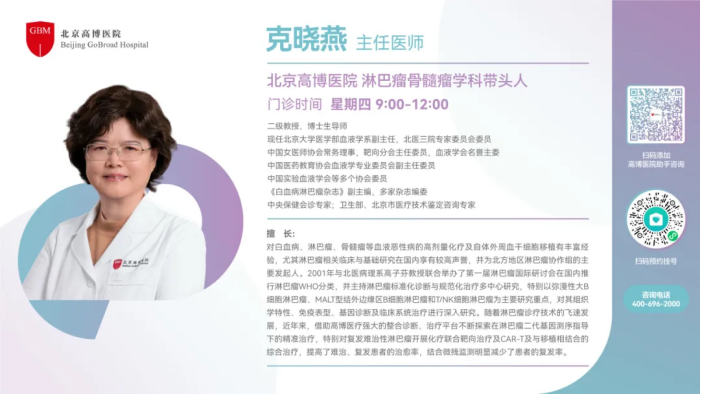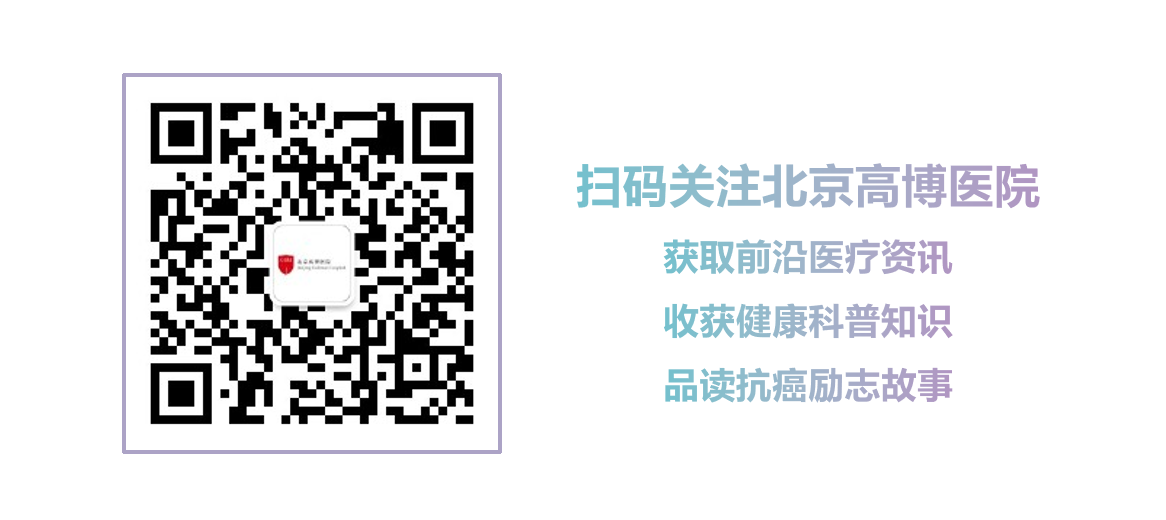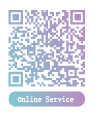Masterclass Interview | Professor KE Xiaoyan's Insights: Exploring Optimization of CAR-T Therapy for Treating Relapsed/Refractory B-cell Lymphoma
On November 16-17, 2024, the GoBroad Medical Forum – 2024 Boren Hematology Conference was successfully held in Beijing. [Oncology News] had the special privilege of interviewing Professor KE Xiaoyan from Beijing GoBroad Hospital, who provided an in-depth analysis of the latest advancements in CAR-T cell therapy and optimization strategies.
Progress and Clinical Practice Experience in CAR-T Cell Therapy for Lymphoma
Professor KE Xiaoyan: Twelve years ago, Emily, a patient in the United States, became the world’s first child to receive CAR-T cell therapy, marking the beginning of a new era in cellular immunotherapy. This milestone was particularly significant for the treatment of lymphoma, offering hope for patients with relapsed/refractory disease. Over the years, the research and development of CAR-T therapy have progressed in several key areas: First, the optimization of CAR-T structural domains has been an ongoing process, evolving from first-generation CAR-T technology to the fifth generation, with continuous improvements enhancing its efficacy. Second, the expansion of therapeutic targets has provided more treatment opportunities. In relapsed/refractory diffuse large B-cell lymphoma (DLBCL), common CAR-T targets include CD19, CD20, and CD22. To date, 13 CAR-T products have been approved worldwide, with 5 already available in China.
Since 2017, our hospital’s lymphoma department has been conducting CAR-T cell therapy for lymphoma. To date, we have treated over 1,000 patients with CAR-T therapy. Our findings indicate: The efficacy of CAR-T therapy in our Investigator-Initiated Trials (IITs) is consistent with real-world international treatment outcomes. CAR-T therapy has demonstrated notable efficacy in challenging cases, such as primary mediastinal lymphoma and primary central nervous system lymphoma (PCNSL), especially when combined with autologous hematopoietic stem cell transplantation (HSCT). For highly refractory patients, the combination of CAR-T therapy with allogeneic HSCT has shown further improvement in treatment effectiveness.
Professor KE Xiaoyan: As we know, the primary adverse effects of CAR-T therapy include cytokine release syndrome (CRS) and immune effector cell-associated neurotoxicity syndrome (ICANS). In China, comprehensive clinical guidelines and expert consensus have been established to manage these side effects. Our research team has found that patients with lower tumor burden experience significantly milder CRS reactions after CAR-T therapy. Additionally, the severity of CRS varies depending on the type of CAR-T product used: CD28-based CAR-T therapy is associated with a higher CRS incidence but also exhibits stronger antitumor activity. 4-1BB-based CAR-T therapy generally induces a lower CRS response. We also observed that pre-treatment tumor reduction (debulking) significantly reduces CRS severity.
In the treatment of primary central nervous system lymphoma (PCNSL), the high incidence of ICANS has been a major concern. However, our team’s research suggests that if patients achieve complete remission (CR) through tumor reduction before CAR-T therapy, the incidence of ICANS is significantly lower, confirming the feasibility of this approach. Our hospital’s lymphoma team has treated approximately 189 PCNSL patients using CAR-T therapy. We found that, regardless of whether patients received autologous HSCT, CAR-T therapy, or a combination of both, proper pre-treatment management ensures that adverse effects remain controllable.
Professor KE Xiaoyan: Over the years, our lymphoma department has successfully treated over 1,000 lymphoma patients with CAR-T therapy. Through this process, we have redefined the role of CAR-T therapy: Initially, CAR-T was considered a last-resort salvage therapy. However, it is now recognized as an effective treatment option within an integrated therapeutic strategy. We should continue exploring combination therapies involving CAR-T and other treatment modalities to maximize efficacy.
With the increasing availability of CAR-T therapy, the number of relapsed patients post-treatment has also grown. Our findings indicate that tumor burden reduction before therapy significantly impacts treatment outcomes and that achieving deeper tumor remission after CAR-T therapy is crucial for long-term prognosis. For patients with insufficient tumor remission or those experiencing post-CAR-T relapse, consolidation treatments are essential. Research shows that sequential CAR-T therapy, compared to conventional second-line treatments combined with HSCT, is more effective and yields higher response rates.
For highly refractory patients, we have explored CAR-T therapy in combination with allogeneic HSCT, followed by donor-derived CAR-T infusion to further eradicate residual tumor cells. This approach has opened new avenues for treatment and provided renewed hope for patients. Notably, our research on universal CAR-T therapy combined with allogeneic HSCT has shown excellent safety and efficacy, with no severe graft-versus-host disease (GVHD) observed. These innovations may represent a crucial direction for future breakthroughs, bringing greater curative potential for lymphoma patients.
Expert Introduction

















